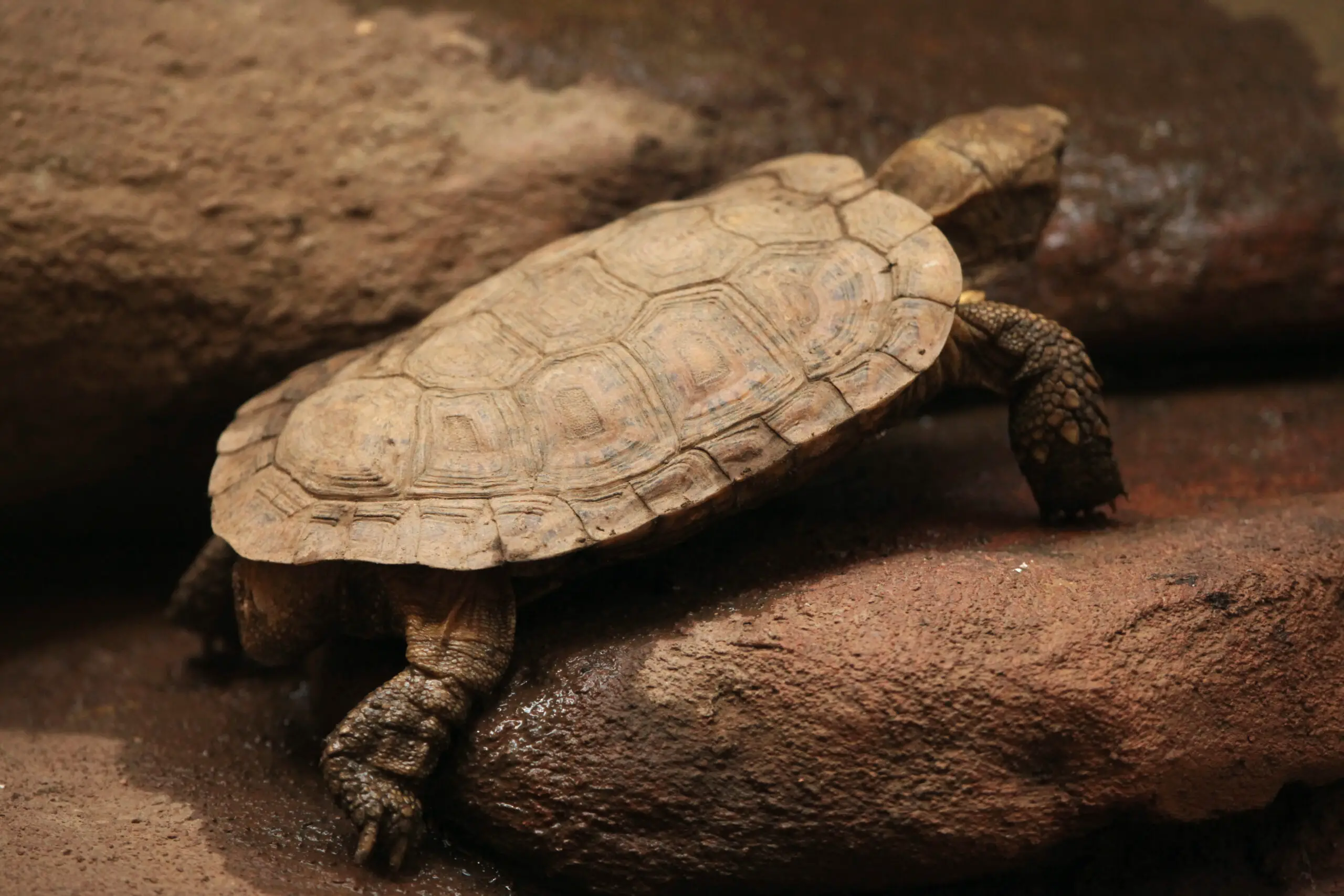Is your pancake tortoise pregnant? Or maybe you’re thinking about pancake tortoise breeding! Either way, you must wonder, how many eggs do pancake tortoises lay?
Female pancake tortoises usually lay just one egg per clutch, but this isn’t always the case.
In today’s article, we’ll tell you everything you need to know about egg-laying in pancake tortoises. Let’s dive in.
How Many Eggs Do Pancake Tortoises Lay?
Typically, pancake tortoises lay one elongated egg per clutch every four to eight weeks. In some cases, female pancake tortoises can lay two eggs. The pancake tortoises may produce around three or four clutches per year.
Moreover, pancake tortoise eggs are often two inches long and one inch wide. They have a hard white shell, weighing around 11 to 14 grams when laid.
The hatchlings weigh around six to eight grams on the day of hatching and are about 1.6 inches long.
When Do Pancake Tortoises Lay Eggs?
Naturally, the breeding season of pancake tortoises is through January and February. So, you can expect the females to lay eggs from June to August.
However, with pancake tortoises in captivity, you may find tortoises breeding any time of the year. Typically, the female tortoises produce more eggs during the summer period. While they don’t make a more significant number of eggs, they have one to two eggs more frequently.
In summer, the females can lay another egg clutch in four to six weeks only after the previous clutch.
How to Tell If a Female Tortoise Is Ready to Lay an Egg
When it’s time for the pregnant female tortoise to lay an egg or two, you might notice that she becomes more active than usual. She’ll search for a suitable location to lay the eggs.
It’s crucial to prepare a suitable laying site for the tortoise. If she’s unable to find the right laying site, she might become stressed enough to retain eggs.
In nature, pancake tortoises lay the egg in loose, damp sand. So, we want to mimic that environment for the tortoise.
Therefore, a suitable amount of damp sand or a mixture of 1:1 sand and wet coconut fiber will be perfect for the tortoise to lay eggs. Moreover, the area must be warm and away from other tortoises or pets.
An excellent example of a suitable laying site would be a medium-sized covered container.
Taking Care of a Female Pancake Tortoise
The egg production process is exhausting for the female tortoise. You should ensure a healthy diet with calcium and supplements for her, especially during the breeding season.
Since egg production consumes a lot of calcium from the tortoise’s body, calcium is an essential supplement during this period.
Additionally, you shouldn’t attempt to breed adult tortoises if they aren’t healthy or if you won’t be able to take care of them.
Taking Care of Pancake Tortoise Eggs
After the female lays the egg, she usually uses her back legs to toss the sand, or any substrate, over the eggs to hide them.
While it may look like the tortoise is struggling or harming the eggs, there’s no need to worry, as it’s all part of the process. If you interrupt this process, you may end up causing harm to the eggs.
So, it’s best to leave the female to do her job peacefully. It typically doesn’t take a long time.
After the tortoise finishes the covering process, you can transfer the eggs to the incubator. One thing you should know is that you must handle the eggs gently. Also, it would help if you put on latex-free gloves when taking the eggs.
Moreover, when you move the eggs, you should never turn them in any direction. So, when you transfer the eggs to the incubator, they should be in the same position as you found them.
Finally, place the eggs in a reptile egg incubator with a 1:1 mixture of vermiculite to water.
Incubation Period of the Eggs
Typically, the females lay the eggs in loose sandy soil, where the eggs incubate for around four to six months at about 86 degrees F.
There’s no way of telling exactly how long the incubation period of an egg will be. It differs from one clutch to the other. So, it would help if you were patient, as it might take a long time for an egg to hatch.
When incubating the eggs, keep them at 86 to 89 degrees F. One thing worth mentioning is that the incubation temperature can significantly affect the gender of the hatchlings.
If you induce a cooler incubation temperature of around 77 to 84 degrees F, the hatchling is more likely to be male. On the other hand, with higher incubation temperatures of about 82 to 92 degrees F, the hatchling is more likely to be female.
The Hatching of the Eggs
Typically, it doesn’t take long for the hatchlings to emerge from the eggs. The first thing you should do is remove the hatchling and clean any remains of incubation media on them. Then, soak the hatchlings in a container of shallow, warm water for 15 minutes.
Moreover, to prepare a new home for the hatchlings, place a damp paper towel on the bottom of a clean container. After that, place the hatchlings inside the container and put the container back in the incubator for a few days.
Conclusion
So, how many eggs do pancake tortoises lay?
These fascinating tortoises can lay one egg every four to eight weeks. In some rare cases, the pancake tortoises can lay two eggs in one clutch.
The eggs have a white, hard shell. Moreover, the pancake tortoises’ eggs are usually around two inches long and one inch wide.
It may take anywhere from 90 days to six months for the eggs to hatch. So, it would help if you were patient.




